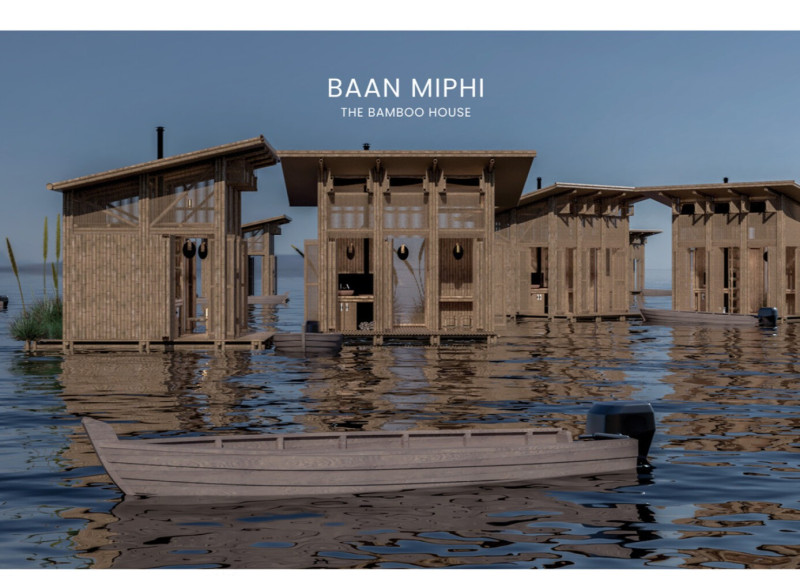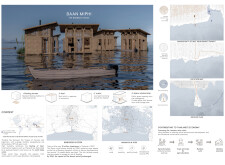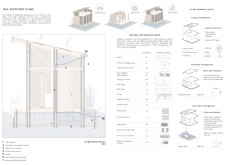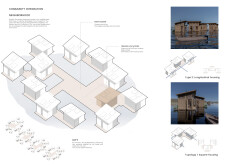5 key facts about this project
### Overview
Baan Miphi, also known as The Bamboo House, is located in Bangkok, Thailand, and has been designed in response to the projected rise in water levels and flooding anticipated by 2050. This project emphasizes sustainable architecture through the use of bamboo—a locally sourced, renewable material—while incorporating ecological design principles aimed at promoting self-sufficiency in living environments.
### Spatial Strategy
The design of Baan Miphi focuses on creating flexible housing solutions that respond to the complexities of flooding and climate change. The residences are modular, built upon reclaimed barrels to function as floating homes, allowing for easy assembly or disassembly in accordance with environmental changes. The spatial configuration includes interconnected units that accommodate both private living spaces—such as bedrooms—and public areas that foster community interaction. The incorporation of communal passageways enhances social engagement and facilitates natural ventilation and light throughout the habitation.
### Materiality and Sustainability
Bamboo serves as the primary structural material, valued for its lightweight properties and natural resistance to environmental elements. Complementary materials include bamboo plywood for walls and flooring, as well as reclaimed barrels utilized for buoyancy and stability. Solar panels are integrated into the design to support autonomous energy management, while a rainwater recovery system along with phyto-purification methods addresses greywater management through natural vegetation. This multi-faceted approach not only encourages resource efficiency but also promotes local economic stability by supporting bamboo cultivation and related craft activities within the community.






















































